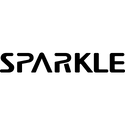
Intel to Explore Optimization of Arc GPUs When Paired with Older Generation CPUs
VideoCardz has put a spotlight on a compelling Intel Community announcement—ten days ago, a site moderator (RonaldM_Intel) disclosed that company engineers are currently engaged in the investigation of a major Arc graphics card-related issue. At the beginning of 2025, Hardware Unboxed uploaded a video article (see below) that delved into the Arc Xe2 B580 graphics card design's "big problem." Going back several months, review outlets observed B580 sample cards leveraging lower than expected performance when paired with older generation processors. As summarized by VideoCardz's recent report; significant performance drops were tracked when test units were linked up with AMD Ryzen 5 2600 or 5600 CPUs—relative to a more modern rig; powered by Team Red's Ryzen 7 9800X3D. Additionally, evaluators observed worrying signs when B580 cards were tested on platforms based on Intel's 9th Gen Core i5-9600K processor.
Budget-conscious buyers have embraced Team Blue's new generation cards, with many participants upgrading older builds with Intel Arc B580 12 GB and B570 10 GB graphics cards (original launch MSRPs: $250 and $220, respectively). Given that many owners will be sticking with prior-gen processors, industry watchdogs have leveled criticism at Team Blue—the company has disappointed many, with an apparent lack of action. Months after the fact—likely after a healthy intake of community feedback—Intel has officially acknowledged these issues. As disclosed by RonaldM_Intel's announcement: "thank you for your patience. We are aware of reports of performance sensitivity in some games when paired with older generation processors. We have increased our platform coverage to include more configurations in our validation process, and we are continuing to investigate optimizations."
Budget-conscious buyers have embraced Team Blue's new generation cards, with many participants upgrading older builds with Intel Arc B580 12 GB and B570 10 GB graphics cards (original launch MSRPs: $250 and $220, respectively). Given that many owners will be sticking with prior-gen processors, industry watchdogs have leveled criticism at Team Blue—the company has disappointed many, with an apparent lack of action. Months after the fact—likely after a healthy intake of community feedback—Intel has officially acknowledged these issues. As disclosed by RonaldM_Intel's announcement: "thank you for your patience. We are aware of reports of performance sensitivity in some games when paired with older generation processors. We have increased our platform coverage to include more configurations in our validation process, and we are continuing to investigate optimizations."













































































